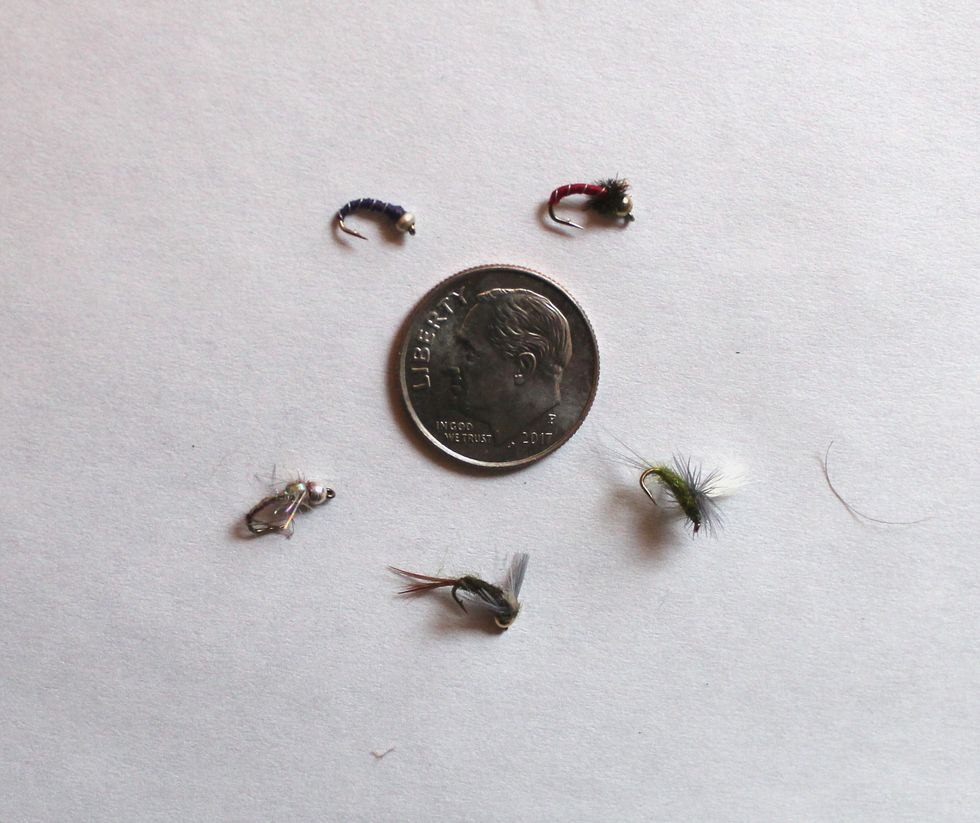As the cooler weather arrives the idea of standing around in water becomes less and less attractive. Sensible anglers call it a season. They put their gear in the closet, and leave it there until April.
I get it. I really do. And I was really getting it Friday, Oct. 30, when I was standing in the Blackberry River, water up to my navel, and wet snow falling, fishing “specks” to the rainbow trout that were stocked a week before.
In cold conditions the bugs that trout eat tend to be smaller than the big fat bugs that we see in spring and summer.
You can be polite and decorous and call them “midges.” Or you can do what I do and refer derisively to these itty bitty flies as “specks.”
I have never been able to get a handle on specks, which I define as any fly that is size 20 or smaller.
They are hard to handle, especially with cold, stiff fingers. They require extremely thin tippets which are also hard to handle.
They are also hard to see.
So imagine standing in the swollen stream, cold water playing about the wadered, thermal-clad lower extremities, and large wet blobs of snow falling off trees and landing, with uncanny accuracy, on the angler’s head, denting both hat and spirits.
I’ve done this every year for decades now, with just about zero fish to show for it.
Why? Because other people do it, and do it well.
I want to be one of the Speck People.
My speck game improved a modest 800 kajillion percent this year, thanks mostly to the fluorocarbon tippet material made by Bozeman Flyworks.
It’s X-rated, meaning it comes in the diameters familiar to fly-fishermen: 0X, 1X etc. down to 7X.
For $10 you get 55 yards, compared to $15 for 30 yards of the fly shop stuff.
And it’s stiffer than the fly-shop brands.
I like stiff, because I am tying droppers. Other speck anglers prefer a more supple fluorocarbon tippet. Your mileage will definitely vary.
For imitating Blue-Wing Olives in the nymph stage, the winning pattern has been Barr’s Emerger, size 20. It’s a beadhead nymph so it gets down in the water column relatively quickly.
I’ve also used various sparkly things and zebra midges, all in sizes 20 and 22.
There is some distance to go here. Catching recent stockers in a medium-sized stream is one thing. Catching fish on specks in the Housatonic, Farmington or Esopus is another.
But it’s a breakthrough.
And it means I’ll get another few weeks of fishing in before I hang it up — no small thing in the COVID-19 age.










 Penguin Random House
Penguin Random House
 A needlework example.Cynthia Hochswender
A needlework example.Cynthia Hochswender Alexandra Peters, left, is exhibiting needlework samplers from her collection at the Litchfield Historical Society Museum.Cynthia Hochswender
Alexandra Peters, left, is exhibiting needlework samplers from her collection at the Litchfield Historical Society Museum.Cynthia Hochswender


